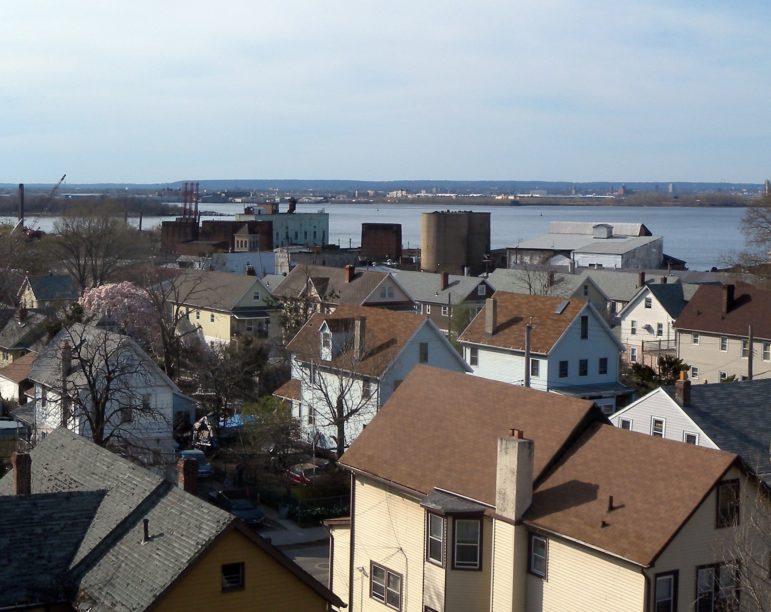
Jim Henderson
A view of Mariner's Harbor, one of the seven neighborhoods that make up Staten Island's North Shore.
New York City’s 59 community districts create the mosaic that is the city—vertical versus low, dense or airy, rich to poor. Rare is the district that itself resembles the city as a whole.
But district 1 on Staten Island, which covers the top of the island and the neighborhoods of Grymes Hill-Park Hill, Mariner’s Harbor, Port Richmond, Stapleton, St. George-New Brighton, West Brighton and Westerleigh—is such a place. No ethnic or racial group represents more than 40 percent of the population across the area, although there are dominant groups in some of the neighborhoods. And income inequality is stark, with household income in the area climbing even as the area’s poverty rate rises.
A new report by the Citizens’ Committee for Children of New York, Inc., based on statistical data and participatory research, finds that the North Shore belies some of the common stereotypes about Staten Island—or at least presents complications and nuances to those pre-conceived notions.
Take homeownership. In the minds of most residents of the other boroughs, Staten Island is the land of single-family homes, and rates of homeownership on the North Shore are higher than citywide. But in several of the Shore’s component neighborhoods, renters make up half the population. And while rents have not risen as fast there as in some other areas of the city, a higher share of North Shore renters are “severely rent burdened,” meaning they pay more than the half their income toward rent.
Facts like those are likely to figure prominently in the looming debate over the city’s proposed rezoning of the Bay Street corridor on the east cost of the North Shore. The possibility of a rezoning has been in the air since early 2015, and public review is expected to begin this fall. Those who will argue that the area is in desperate need of the real-estate investment that a rezoning might bring and those who will counter that an influx of development will put vulnerable renters at risk of displacement could all find supportive data in the CCC report.
But what the study makes abundantly clear is that housing is not the sole need on the Shore: Jobs and transit loom as larger. As the report reads,
No community district in New York City with a poverty rate of at least 20 percent has such a high share of residents in higher income households. Trends suggest that this gap may be growing, as the poverty rate continues to increase on the North Shore even as it decreases citywide. High rates of poverty in certain parts of the North Shore may be driven by low levels of employment. The North Shore has the 8th lowest labor force participation rate and the 10th lowest employment-population ratio out of the city’s 59 community districts.
…
Inadequate transportation infrastructure is by far the most pressing community priority, and community members describe long commute times and inadequate service as critical impediments to their economic security. Lower income residents are far less likely to have access to a vehicle than higher income residents, so improved public transportation for travel both within and outside the district is of particular importance to these residents.
Read the full report here.









One thought on “A Microcosm of the City, in Desperate Need of More Transit”
The community district (SI CB-1) has always included some higher-income nice middle-class sections of Staten Island like Westerleigh. This is hardly news. All of Staten Island has a long commute.